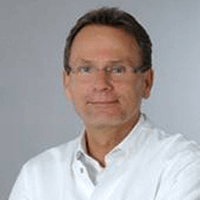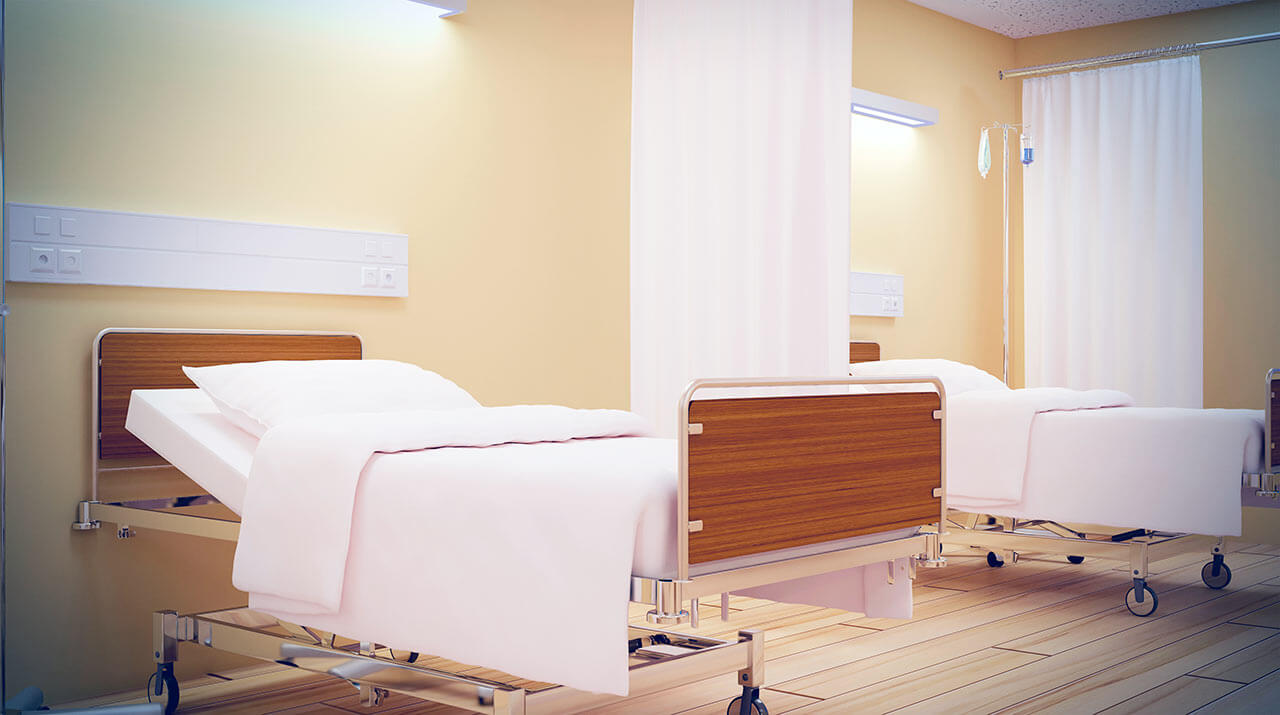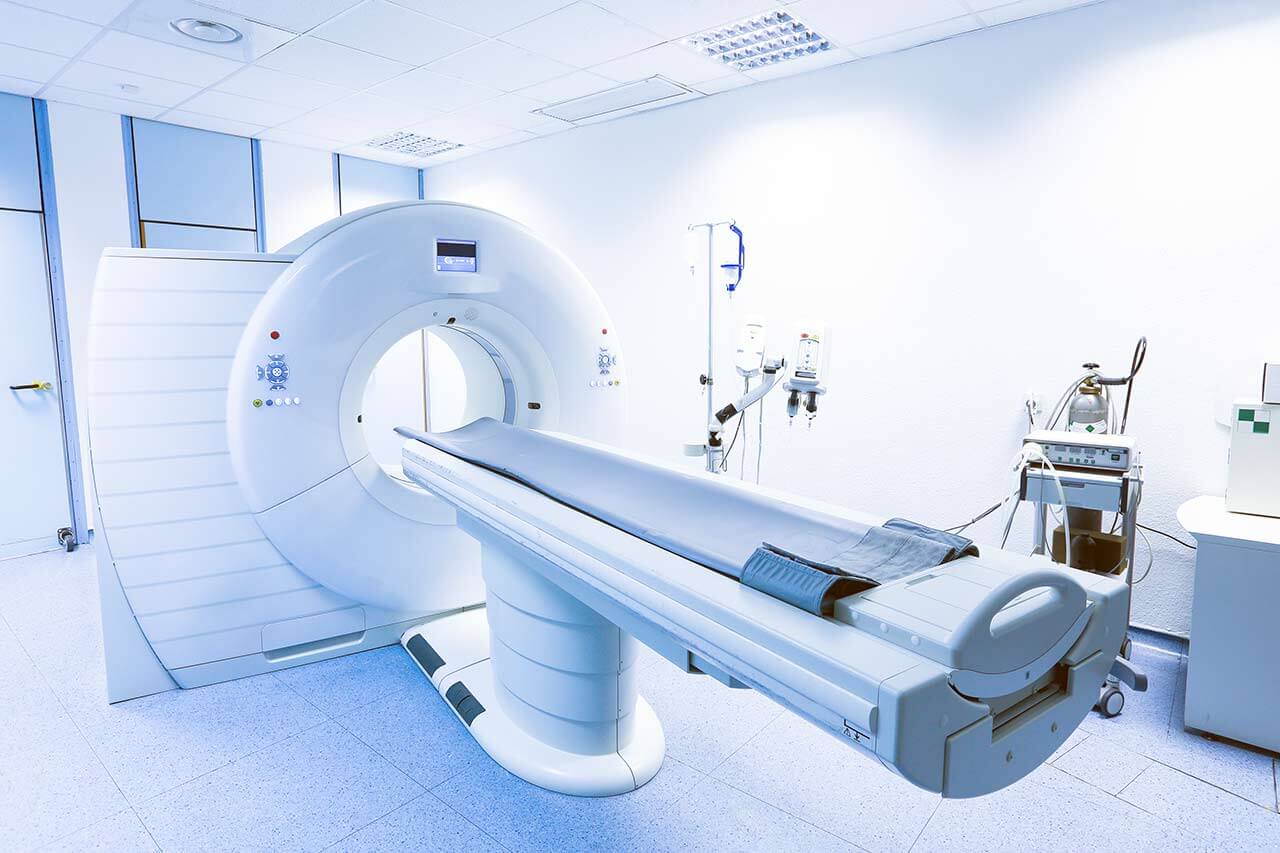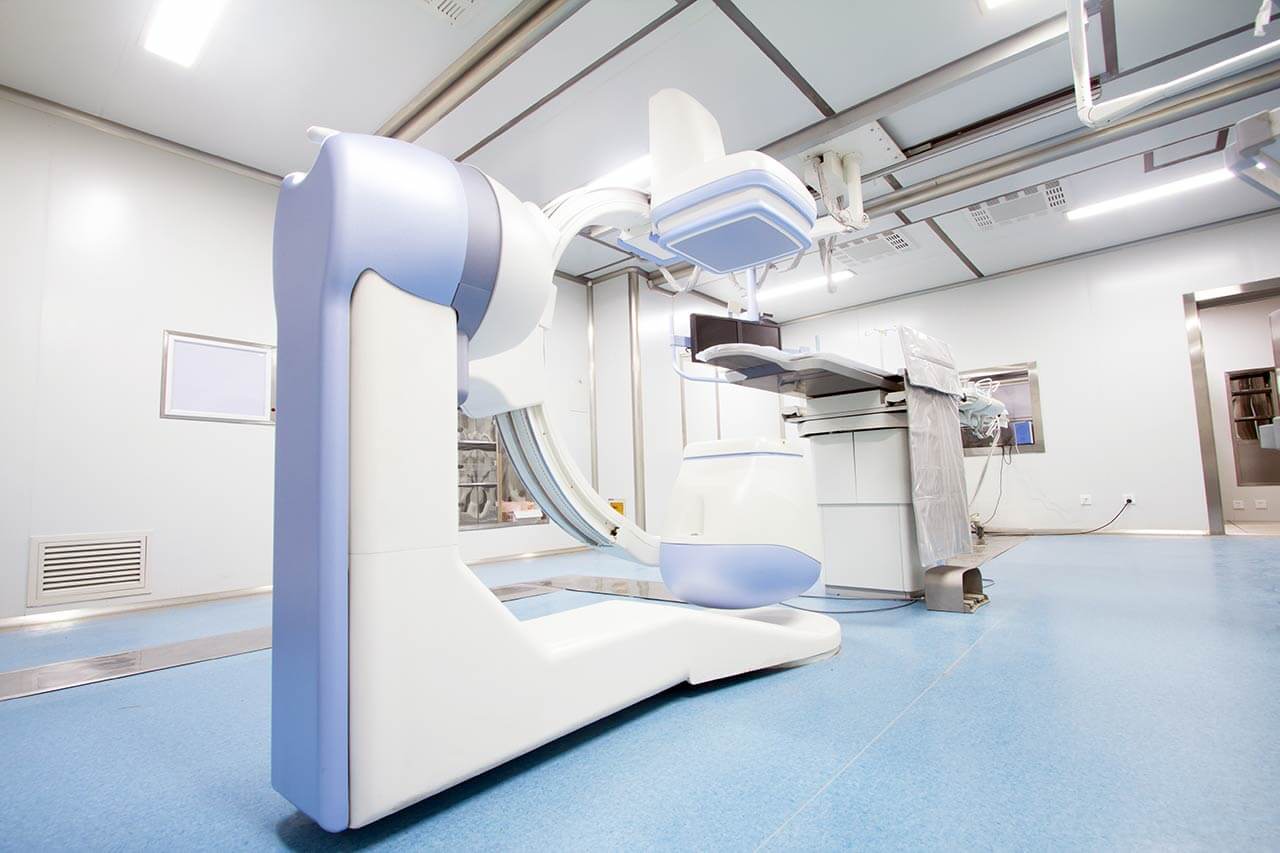
The program includes:
- Initial presentation in the clinic
- clinical history taking
- review of medical records
- general clinical examination
- X-ray of the hand and forearm
- neurological examination
- electromyography
- electrophysiology study
- nursing services
- treatment by leading experts
- elaboration of individual treatment plan
Required documents
- Medical records
- Electroneuromyography (ENMG) (if available)
Service
You may also book:
 BookingHealth Price from:
BookingHealth Price from:
About the department
The Department of Hand Surgery at the University Hospital Greifswald offers the full range of services in its area of specialization. The medical facility provides modern diagnostics and treatment for all hand diseases. Replantation surgery is available 24 hours a day. The department's surgeons demonstrate excellent results in plastic surgery to close skin and soft tissue defects using microsurgical transplants. Reconstructive microsurgical interventions on the peripheral nerves are successfully performed in the operating rooms of the medical facility. Depending on the clinical indications, operations can be performed on an inpatient or outpatient basis. Since 2013, the department has been a certified Hand Trauma Center (certificate of the Federation of European Societies for Surgery of the Hand, FESSH). The department's specialists work in operating rooms equipped with state-of-the-art technology. Advanced surgical microscopes, monitoring devices, and computer technology provide the most accurate interventions with minimal trauma rates. The professionalism of the department's doctors also plays a decisive role in hand surgery because such operations require deep expert knowledge and experience. The department is headed by Prof. Dr. med. Andreas Eisenschenk.
For many years, the department has been successfully performing surgery to replant the whole hand and individual fingers. Such interventions are classified as complex operations because they require the restoration of the integrity of blood vessels, nerve endings, tendons, bones, and muscle tissue with further normalization of blood circulation. Thus, replantation surgery can be compared with the filigree work of a jeweler. The success of the intervention is determined by the complete restoration of sensation and movement in the amputated limb. A replantation procedure lasts about 4-6 hours, and in some cases even longer. The operation can be conditionally divided into the following five stages: primary wound treatment, matching bone fragments with the help of fixing structures, suturing of blood vessels (often with artery and vein plastic repair), restoration of the integrity of nerves and tendons, and skin grafting to restore the skin. Following the surgical intervention, the department's surgeons apply a sterile bandage with special fixation systems to the operated hand. A patient is under constant medical supervision. The final stage of treatment is complex rehabilitation activities, including massage, therapeutic exercises, physiotherapy, and drug therapy.
The department's surgical team often treats patients with wrist arthritis and rheumatic lesions of the hand joints. The first-line treatment is usually conservative therapy, including the application of gels and ointments individually prescribed by the attending physician, drug therapy, therapeutic exercises, and physiotherapeutic procedures (acupuncture, massage, magnetotherapy, electrophoresis, etc.). The department's specialists recommend that patients reconsider their diet, excluding fried, smoked, and pickled meat and fish dishes, fatty dairy products, pastries, and high-calorie cream confectionery. Severe hand pain caused by arthritis or rheumatism can be treated with intra-articular injections of drugs. If the above-mentioned therapeutic measures do not give the desired result and a patient cannot get rid of the pain syndrome, the next treatment option is surgery. Depending on the severity of the clinical case, the department's surgeons offer reconstructive hand surgery, arthrodesis (immobilization of the affected joint), or hand joint replacement surgery.
The department's therapeutic options are complemented by the treatment of Dupuytren's contracture. The disease is associated with pathological changes in the connective tissue of the palm and shortening of the tendons, due to which movement disorders of the fingers develop. The ring finger and little finger are most often affected, as a result of which a person cannot fully straighten them. The exact causes of the development of the disease have not been established, but presumably they may be associated with a genetic predisposition, smoking, excessive consumption of alcoholic beverages, heavy physical work, or hand injuries. Men are more at risk of developing Dupuytren's contracture. As for the treatment of the disease, the department uses conservative and surgical methods. Pathology has 4 stages, and in the early stages of its development, doctors use only conservative therapy, including physiotherapy, therapeutic exercises, massage, warm baths, wearing special splints, and plaster bandages. Good results can also be achieved with the injections of corticosteroids and collagenase clostridium. In some cases, radiation therapy may be recommended for patients. The last-line therapy is surgery. The main surgical procedure for Dupuytren's contracture is needle aponeurotomy, during which the department's surgeons separate the connective tissue strands that prevent the normal extension of the fingers. The operation is performed using a minimally invasive approach, so there is no recovery period after the surgical intervention.
The department's main clinical focuses include the following:
- Upper limb replantation surgery (24-hour emergency service)
- Conservative and surgical treatment of degenerative joint diseases (arthrosis) and rheumatic hand lesions
- Conservative and surgical treatment of Dupuytren's contracture
- Conservative and surgical treatment of hand and wrist fractures, including highly severe injuries
- Conservative and surgical treatment of tendon injuries and tendon diseases, including reconstructive surgery on hand tendons
- Conservative and surgical treatment of peripheral nerve injuries and nerve compression syndromes in the upper limbs
- Conservative and surgical treatment of inflammatory processes in the hand
- Surgical repair of bone and joint defects (for example, after fractures)
- Surgical removal of benign and malignant hand tumors
- Reconstruction and closure of soft tissue defects of the upper limbs using tissue transplant procedures
- Surgical treatment of paralysis of the upper limb
- Other therapeutic options
Curriculum vitae
Higher Education and Professional Career
- 1977 - 1984 Human Medicine studies at the Free University of Berlin.
- 16.10.1984 Admission to medical practice, Free University of Berlin.
- 01.01.1985 - 31.12.1986 Research Fellow in the Department of Cardiothoracic Surgery at the University Hospital Goettingen.
- 29.11.1985 Thesis defense with honors, Department of Orthopedics, Free University of Berlin. Subject: "Thermographic assessment of the changes in blood circulation in the forearm in the treatment using the physiotherapeutic measures".
- 01.01.1987 - 31.10.1997 Research Fellow, Medical Specialist and Senior Physician, Department of Orthopedics, University Hospital Charite Berlin.
- 1991 - 1997 Head of the Replantation Unit, Department of Orthopedics, Free University of Berlin, Oskar-Helene-Heim Hospital.
- Since 01.11.1997 Head of the Section of Surgery, Hand Replantation and Microsurgery, Trauma Surgery Clinic Berlin (Unfallkrankenhaus Berlin).
- Lectures and internships at the Faculty of Medicine of the Ernst Moritz Arndt University of Greifswald (since 1998), at the Faculty of Medicine of the Free University of Berlin (since 1997) and at the Faculty of Medicine of the Humboldt University of Berlin (since 2002).
- 2006 - 2008 Additional academic education and cooperation with the Faculty of Medicine of the Humboldt University of Berlin.
- Head of the Center for Specialized Rehabilitation Medicine at the Trauma Surgery Hospital Berlin (Unfallkrankenhaus Berlin).
- Since 16.04.2012 Head of the Department of Hand Surgery at the University Hospital Greifswald.
Hospitation Abroad
- From May to July 1990, Scientific Guest Lecture in the Department of Hand Surgery and Reconstructive Microsurgery, General Hospital, Toronto, Canada.
- 1995 Guest Lecture at the University of Ioannina, Greece.
- 2007 Guest Lecture at the University of Larissa, Greece.
Board Сertification and Additional Qualifications (Berlin Medical Association)
- 02.04.1991 Board certification in Orthopedics.
- 28.04.1992 Additional qualifications in Sports Medicine.
- 26.11.1996 Optional advanced training in Special Orthopedic Surgery.
- 26.11.1996 Additional qualifications in Hand Surgery.
- 09.10.2007 Board certification in Orthopedics and Traumatology.
- 10.21.2008 Additional qualification in Radiodiagnostics (in the area of specialization).
Memberships in Scientific Societies and Organizations
- Since 1988 Member of the Section for Hand Surgery and Microsurgery of the German Society of Orthopedics and Traumatology (DGOT).
- Since 01.10.1989 Member of the German Society of Orthopedics and Traumatology (DGOT).
- Since 1992 Associate Member of the German-speaking Working Group on Microsurgery of Peripheral Nerves and Blood Vessels (DAM).
- Since 1992 Associate Member of the German Working Group on Hand Surgery (DAM).
- Since 1992 Associate Member of the German Society for Hand Surgery (DGH).
- November 1993 Founding Member of the Working Group on the Osteosynthesis of the Hand of the German Section of the International Working Group (IAO).
- Since June 1995 Member and Head of the Section for the Treatment of Injuries, Soft Tissue Damage, Microsurgery and Replantation Surgery of the German Society of Orthopedic Foot Surgery (DEGOF).
- 13.06.1997 Appointed as a Member of the German-speaking Association for Microsurgery of the Peripheral Nerves and Blood Vessels (DAM).
- 08.10.1997 Appointed as a Member of the German Society of Hand Surgery (DAH).
Photo of the doctor: (c) Universitätsmedizin Greifswald
About hospital
According to the reputable Focus magazine, the University Hospital Greifswald is included in the ranking of the best medical complexes throughout Germany!
The hospital is one of the oldest healthcare facilities in Germany, with long traditions and an excellent reputation. The history of the hospital begins in 1456, when the Faculty of Medicine at the University of Greifswald was founded. During this time, the hospital has managed to earn recognition in the national medical arena and gain prestige abroad. The hospital has 19 institutes and 21 specialized departments. The key to successful clinical practice is the combination of state-of-the-art equipment and highly qualified medical personnel who are actively engaged in the development of effective medical techniques and implement them in everyday practice.
The medical team of the university hospital has more than 4,400 employees, including world-famous professors who regularly undergo advanced training in the leading European and American hospitals, where they share their experience with foreign specialists. The doctors at the medical facility annually treat about 180,000 patients. At the same time, the specialists often provide medical care to patients with complex clinical cases, even in those cases that doctors at other medical centers consider hopeless. The hospital has more than 1,000 beds for inpatients, and many highly-specialized outpatient clinics are available in the medical facility for counseling and outpatient medical care.
The hospital presents all the fields of modern medicine. According to Focus magazine, the medical complex is recognized as one of the best in Germany for treating bowel cancer, bladder cancer, malignant brain tumors, skin cancer, multiple sclerosis, Parkinson's disease, dementia, cardiovascular pathologies, knee and hip pathologies, as well as ophthalmic and proctologic diseases. Diagnostic and therapeutic procedures are carried out in strict accordance with national and international standards, which ensures top-class medical care.
The medical team at the hospital makes sure that each patient feels as comfortable as possible during the therapeutic process. Doctors and nursing staff show humanity and understanding, striving to support each patient in every possible way on the path to recovery.
Photo: (с) depositphotos
Accommodation in hospital
Patients rooms
The patients of the University Hospital Greifswald live in comfortable single and double rooms. The patient rooms are made in bright colors and are quite cozy. The furnishings of a standard patient room include an automatically adjustable bed, a bedside table, a TV, and a telephone. The patient room has a table and chairs for receiving visitors. There is also free Wi-Fi in the patient rooms.
If desired, patients can live in enhanced-comfort rooms. In such rooms, patients are additionally offered toiletries, a bathrobe, and a change of towels.
Meals and Menus
The patients of the hospital are offered three healthy and tasty meals a day: a buffet breakfast, a hearty lunch, and dinner. The hospital also houses a cafeteria where one can have a tasty snack, a cup of aromatic coffee, tea, or soft drinks.
Patients staying in enhanced-comfort rooms are offered a special menu with a wide range of main courses, appetizers, desserts, and drinks.
Further details
Standard rooms include:
Religion
The services of representatives of religions are available upon request.
Accompanying person
Your accompanying person may stay with you in your patient room or at the hotel of your choice during the inpatient program.
Hotel
You may stay at the hotel of your choice during the outpatient program. Our managers will support you for selecting the best option.




